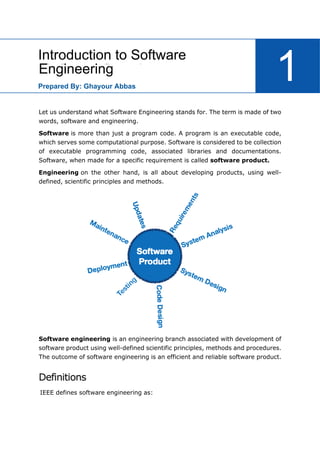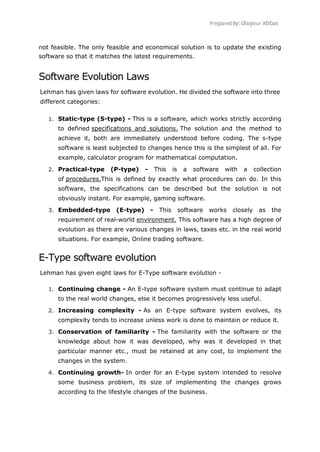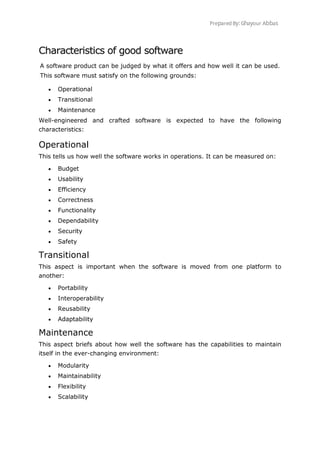Software engineering is the application of engineering principles to the development of software. It involves systematic, disciplined, and quantifiable approaches to develop, operate, and maintain software. The goal of software engineering is to produce reliable and efficient software products. Some key aspects of software engineering include requirements gathering, design, programming, testing, and maintenance. Software engineering principles are important for developing large, complex software in a cost-effective manner that can scale and adapt to changing needs over time.






